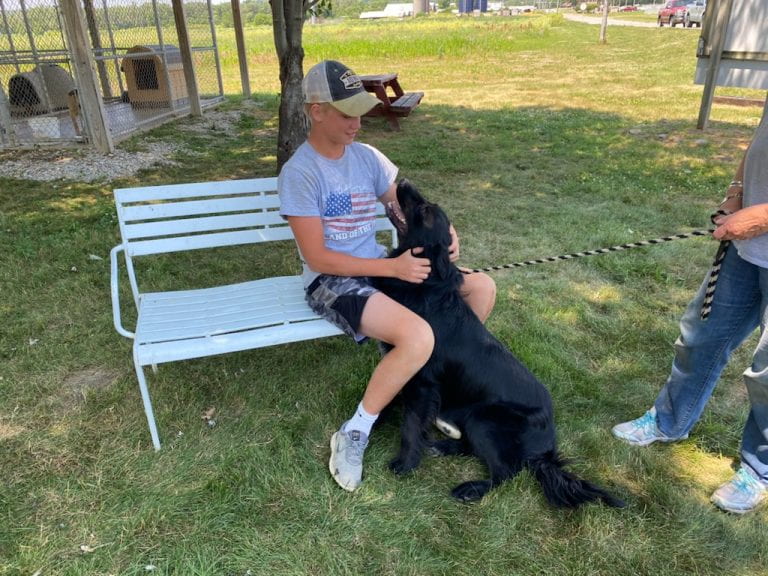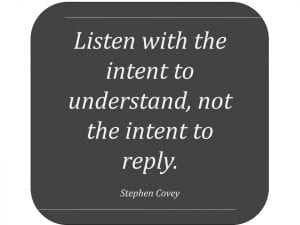I missed posting last week – I believe it is the fifth missed post since January 1, when I made a commitment to posting weekly. I feel an immense amount of gratitude to those readers (I might have five regular readers?!), who give a nudge or notice when I haven’t written. I write for my own personal growth, but knowing others glean something from my written word is humbling, to say the least. I try to avoid making excuses, but excuses for a missed post abound! So before getting into this week’s topic, let the excuses roll: we had a death in the family (you will be dearly missed, Fu!), enjoyed lots of company, hosted a successful “2nd Annual Kruse Family Ride,” bid farewell to a nephew joining the West Point Military Academy, adopted Bradshaw from PAW Animal Shelter, and I participated in an amazing Orton-Gillingham training provided by the Institute for Multi-Sensory Education.

Eugene “Fu Check” Foecke

2nd Annual Kruse Family Ride Destination: The National Motorcycle Museum in Anamosa, IA

Some of our younger riders in front of “Grandma’s Store” with Jack Dailey, off to the U.S. Military Academy @ West Point

Emmett with Bradshaw
Two weeks ago, I had written about Effective Leadership. I identified 10 (without meaning to land on a nice clean number!) qualities that make a leader effective. Of those 10 qualities, I can identify three that I embody, and seven that I need to work on. A few things led to some reflection around one of those areas that I perceive as a strength (“Effective leaders nurture relationships with and among their staff and students.”) There is a line in that paragraph that stops me from identifying this as a pure strength, though: “They listen to understand, rather than listen to respond.”

Listening to understand, rather than to reply or respond, is difficult even in the best of circumstances i.e. when in conversation with someone who is sharing ideas you agree with. Our natural tendency (or is it just my tendency???) is to plan what we are going to say next in the middle of a conversation. We may only be partially listening, because our thoughts are so caught up in what we have to say next. In many instances, I go so far as to interrupt the person I am in conversation with because I’m so anxious to share my thoughts on the topic, and maybe I think what I have to say on the topic is more important or more enlightening. Ugggghhhh!
Listening to understand, rather than reply, is extremely difficult when in conversations with someone who is sharing ideas you don’t agree with. Our natural tendency (again, maybe it’s just my tendency???) is to plan what we are going to say in response. When hearing something I disagree with, I have a tendency to fly right into defense mode. If I would slow down enough to pay attention to my physical state, I might notice that my heart rate increases, my muscles tense, my pulse quickens, and I likely turn red in the face. In defense mode, I’m preparing for a fight – sometimes with words, sometimes with seething angry silence. In addition, I can adopt a “poor you” mindset – the poor soul I’m talking with just doesn’t know any better; in other words, I’m the holder of all knowledge on the topic, and I AM RIGHT. Ugggghhhh!
Very recently, I was in this exact situation with a family member whom I absolutely adore! He was sharing his view on a political issue; I had the complete opposite view. Perhaps because I think so much of this person, I decided to practice listening to understand… and it worked! I very consciously muted my responses as they continually popped in my head. I remained hyper-focused on what he was saying, with the pure intent of trying to understand his viewpoint. In the end, I did have a better understanding of his views; I understood why he was so fired up about it, and I even agreed with a point or two. I’m convinced that my stance of staying quiet and listening, remaining tuned into my thoughts, and asking questions with the “right” tone (curiosity vs anger), led to a calm and rational back-and forth dialogue. I didn’t change my original position on the topic and my core values and beliefs were not altered, but I sure do have a better understanding of his perspective.
As we continue to develop understanding around structured literacy and the Science of Reading in the Fort Madison Community School District, listening to understand remains a critical skill. For too many years, we have been steeped in balanced literacy, as has the entire nation. With 40% (+ or -) of our students identified as nonproficient readers (in line with national percentages), we can’t live in the balanced literacy world anymore. We shouldn’t have landed here to begin with. And certainly shouldn’t have stayed here. But we were doing the best we could with what we knew. Balanced literacy, which includes leveled reading and and a focus on the 3-cueing system was the answer to the ineffectiveness of whole language, but it wasn’t the right answer. Reading proficiency rates have not improved with balanced literacy instruction in place.
We are so fortunate to have adopted a high quality curriculum in our district: EL Education /Open Up Resources. EL Education aligns with the Science of Reading, addressing both sides of the Simple View of Reading: it’s Foundational Skills Block contains a systematic, structured phonics sequence, while its Module and ALL Blocks bring in high quality literature and robust writing instruction to thoroughly address building Language Comprehension. Adopting a high quality curriculum is not enough, though, to ensure high levels of learning for all students. Teachers must have an understanding of the Why? behind the curriculum design. EL’s Why? is found in the Science of Reading. From the EL website: “The Science of Reading: Based on literacy research, our curriculum includes content-rich literature across the disciplines as well as a K-2 structured phonics program.”
Many of the teachers that I get to work with are far into their journey of understanding the Science of Reading. As Margaret Goldberg, co-founder of the Right to Read Project, brilliantly states in a December 2019 Reading Rockets article: We can clarify things for ourselves and on behalf of our students by grounding ourselves in reading research. This group of teachers is taking the time to ground themselves in the the research and/or trusting the guidance from others who are doing so. This group of teachers listens to understand. I also get to work with teachers who are just beginning their journey into understanding the Science of Reading, as well as those who haven’t taken that first step in.
These last two groups of people are the ones who will inspire me to keep striving to maintain a stance of listening to understand. It is with these folks that I must ask questions with a tone that implies curiosity rather than judgement. It is with these folks that I must stay carefully tuned into my thoughts as we engage in conversation. When I feel my heart rate increase, my muscles tense, and my pulse quicken, I have to remember that these teachers have worked hard to bring the best in reading instruction to their students. They believe in doing what is best for kids. They have found success in past practice.
However, in order to ensure high levels of learning for all of our students, these teachers have an obligation to ground themselves in reading research, and/or trust those who have already done so. As I engage in conversations with these groups of teachers, continuing to share the Why? behind our move to structured literacy, and as I listen to understand, I have to trust that they will also listen to understand. I have to remember that the understanding the Why? doesn’t happen overnight, yet remember that our students can’t wait for us to catch up with the research. They will be back in our classrooms in August (trusting that a pandemic doesn’t rear its ugly head!), and they deserve the best instructional practices. I have to encourage them to trust that there is no shame in admitting that some of our past practices were, in fact, ineffective. I have to challenge them to begin, or continue, their journey to understanding the Science of Reading… and to kick that journey into high gear! I didn’t coin the phrase, but it couldn’t be more true: As we know better, we do better.